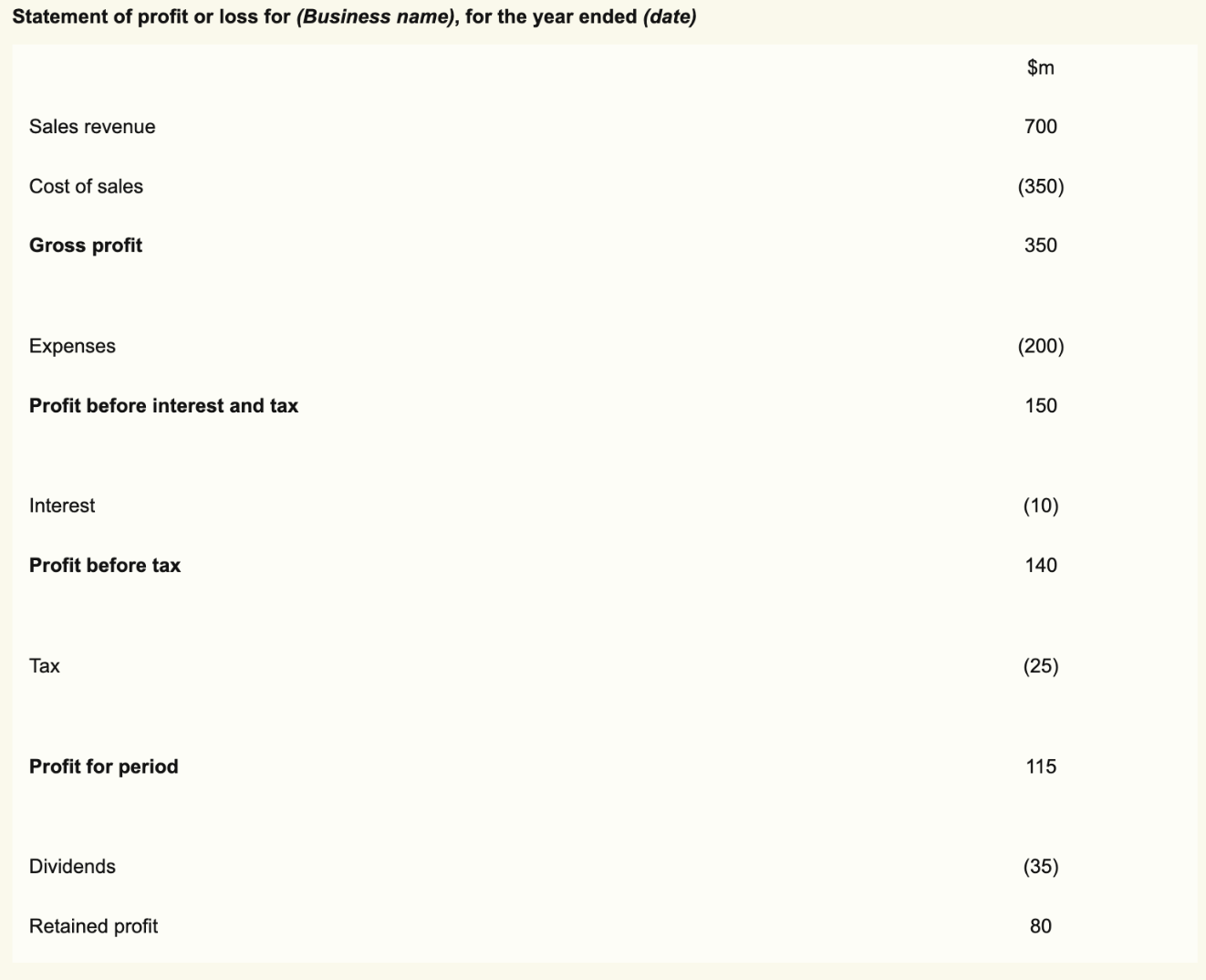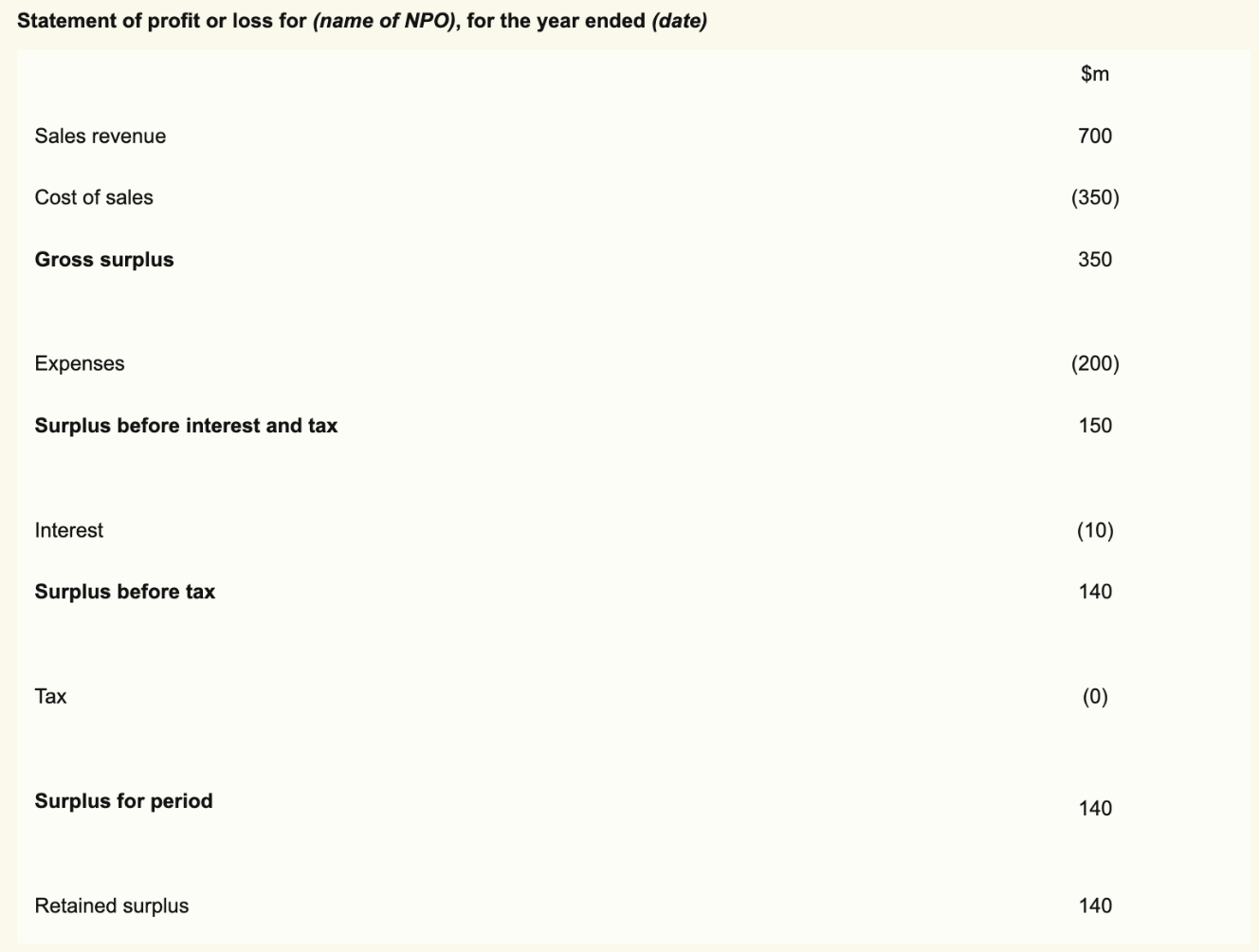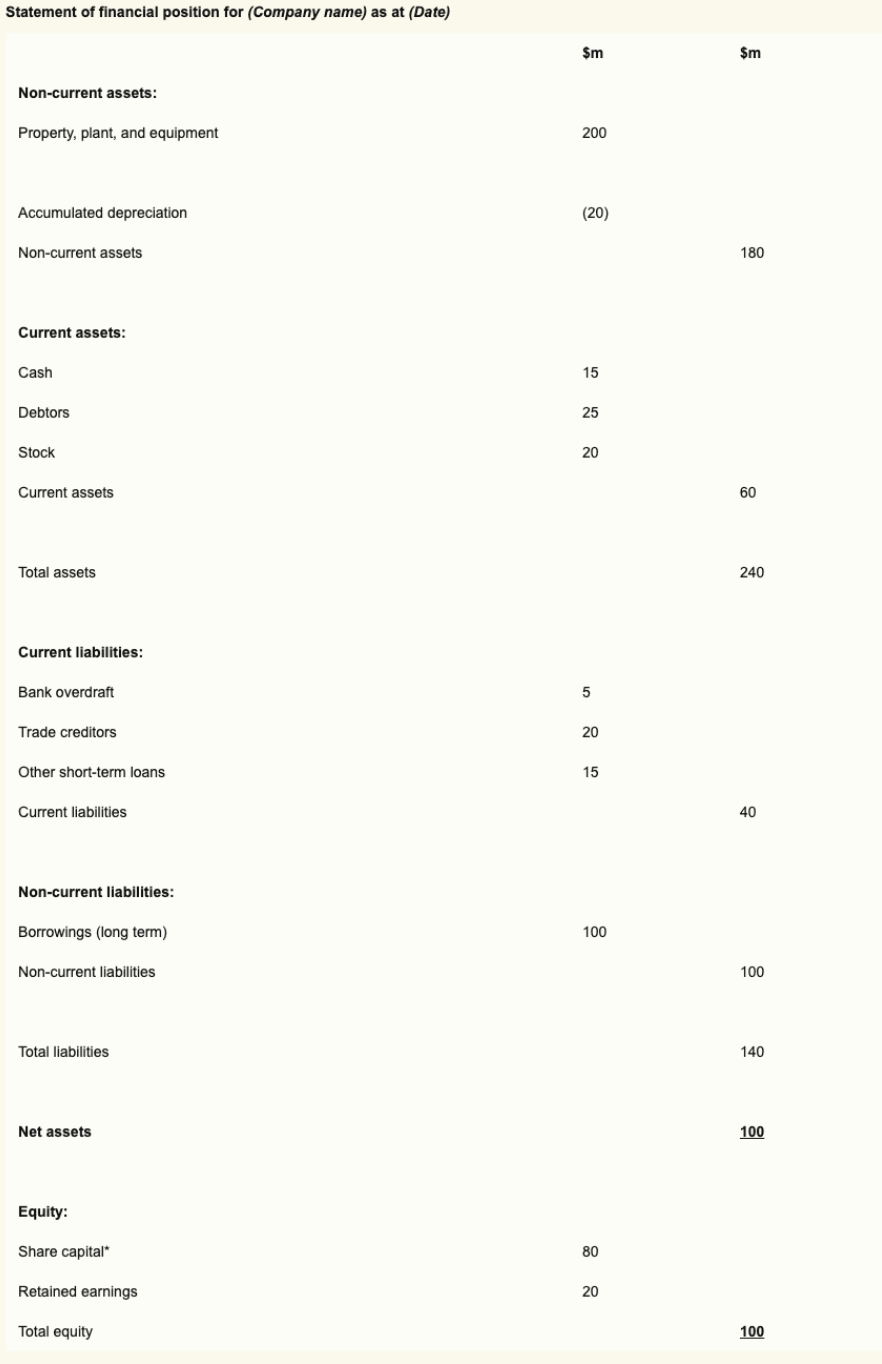3.3-3.4 IB Business Test
5.0(1)
5.0(1)
Card Sorting
1/56
Study Analytics
Name | Mastery | Learn | Test | Matching | Spaced |
|---|
No study sessions yet.
57 Terms
1
New cards
Average Costs
AC=TC/Q
\
AC = Average Cost
TC = Total Cost
Q = Quality of Output
\
AC = Average Cost
TC = Total Cost
Q = Quality of Output
2
New cards
Average Revenue
AR = TR/Q = P
\
AR = Average Revenue
TR = Total Revenue
Q = Quality of Output
P = Price
\
AR = Average Revenue
TR = Total Revenue
Q = Quality of Output
P = Price
3
New cards
Costs
The charges that an organisation incurs from its operations, e.g., rent, wages, salaries, and insurance.
4
New cards
Direct Costs
Costs that do not change with the level of output or sale of a certain good, service, or business operation, e.g, raw materials
5
New cards
Fixed Costs
Costs that do not change with the level of output, e.g., loan repayments and management salaries.
6
New cards
Indirect Costs (Overhead Costs)
These costs are not easily identifiable with the sale or output of a specific good, service, or business operation
7
New cards
Price (Average Revenue)
The amount of money a product is sold for
8
New cards
Revenue
The money (income) received by a business from the sale of goods and/or services
9
New cards
Revenue Streams
The different sources of revenue (or income) for a business, e.g., revenue from sponsorship deals, merchandise sales, membership fees, and royalties
10
New cards
Total Costs
TC = TFC + TVC
\
TC = Total Costs
TFC = Total Fixed Costs
TVC = Total Variable Costs
\
TC = Total Costs
TFC = Total Fixed Costs
TVC = Total Variable Costs
11
New cards
Total Revenue
The sum of income received by a business from its a trading activities. Calculated by: TR = R x Q
12
New cards
Variable Costs
Costs that change with the level of output - they rise when output or sales increase, e.g., raw materials and packaging costs.
13
New cards
Assets
The possessions owned by a business, which have a monetary value, e.g., buildings, land, machinery, equipment, inventories, and cash.
14
New cards
Balance Sheet (Statement of Financial Position)
This set of final accounts shows the value of a firm’s assets, liabilities, and the owners’ investment (or equity) in the business, at a particular point in time.
15
New cards
Cash
This refers to the money an organization has either “in hand” (at its premises) and/or “at bank” (i.e., in its bank account). It is the most liquid type of current assets.
16
New cards
Copyrights
These intangible assets give the registered owner the legal rights to creative pieces of work, such as the works of authors, musicians, conductors, playwrights (scriptwriters) and directors.
17
New cards
Cost of Sales (COS)
These are the direct costs of production, such as the cost of raw materials, component parts, and direct labour.
18
New cards
Creditors (Trade Creditors)
this refers to the suppliers that allow a business to purchase goods and/or services on trade credit.
19
New cards
Current Assets
Short-term assets belonging to an organization that will last in the business for up to 12 months, e.g., cash, debtors, and stock (inventory).
20
New cards
Current Liabilities
These are the short-term debts of a business, which need to be repaid within twelve months of the balance sheet date. Examples include bank overdrafts, trade creditors, and other short-term loans.
21
New cards
Debtors
\n A type of current asset, referring to individual or business customers that owe money to the organization as they have bought goods or services on trade credit, i.e., they need to pay within 30 and 60 days.
22
New cards
Dividends
These are the payments from a company’s profit (after interest and tax) paid to the shareholders (owners) of the company. The amount of dividends paid to an individual shareholder depends on the number of shares held by the individual.
23
New cards
Equity
\n Refers to the value of the owners' stake in the business, i.e., what the business is worth at the time of reporting the balance sheet.
24
New cards
Expenses
These are a firm’s indirect costs of production, e.g., rent, management salaries, marketing campaigns, accountancy fees, bank interest charges, travel expenses, utilities, repairs and maintenance, and general insurance.
25
New cards
Final Accounts
These are the published accounts of an organization, made available to and used by different stakeholders, e.g., managers, employees, shareholders, sponsors, financiers, and investors.
26
New cards
Finished Goods
These are the final products of a business, ready to be sold to customers.
27
New cards
Fixed Assets
\n The long-term assets (possessions) of an organization that have a monetary value and are used repeatedly but are not intended for resale within the next twelve months, e.g. property and equipment.
28
New cards
Goodwill
\n The reputation and established networks (know-how) of an organization, which adds to a firm’s monetary value.
29
New cards
Gross Profit
This refers to the profit from a firm’s everyday trading activities. It is calculated by the formula: Sales revenue – Cost of sales.
30
New cards
Liquid Assets
\n These items of value, owned by the business, cannot be sold quickly, are difficult to sell, and/or cannot be sold easily without incurring a significant loss in value.
31
New cards
Intangible assets
Non-physical fixed assets that are valuable to a firm’s survival and success, such as brand value, goodwill, copyrights, trademarks, and patents.
32
New cards
Intellectual property rights
Abbreviated as IPRs, these are a firm's fixed, intangible assets with a monetary value, comprised of goodwill, patents, copyrights and trademarks.
33
New cards
Liabilities
\n The debts of a business, i.e., the money owed to others, e.g., money owed to financiers, trade creditors, and the government (for tax).
34
New cards
Net Assets
Refers to the overall value of an organization’s assets after all its liabilities are deducted. It is calculated by the formula: total assets *minus* current liabilities *minus* non-current liabilities.
35
New cards
Non-Current Assets (Fixed Assets)
This refers to the long-term assets or possessions of an organization with a monetary value but is not intended for resale within the next twelve months of the balance sheet date.
36
New cards
Non-Current Liability (long-term liability)
\n This refers to debt owed by a business that will take longer than a year (from the balance sheet date) to repay.
37
New cards
Overdrafts
\n This financial service allows customers to temporarily take out more money than is available in their bank account.
38
New cards
Patents
The official rights given to a business to exploit an invention or process for commercial purposes.
39
New cards
Profit after Interest and Tax (Profit for Period)
This section of the P&L account shows the actual value of profit earned by the business after *all* costs have been accounted for.
40
New cards
Profit before Interest and Tax
This section of the P&L account shows the value of a firm’s profit (or loss) before deducting interest payments on loans and taxes on corporate profits.
41
New cards
Raw Materials
These are the natural resources used in the production process to create goods and provide services to customers.
42
New cards
Retained Profit (Retained Earnings)
This refers to the value of a firm’s earnings after all costs are paid (including interest and tax) and shareholders have been compensated (dividends).
43
New cards
Sales Revenue
Shown on the profit and loss account, this refers to the money an organization earns from selling goods and services.
44
New cards
Share Captial
The value of equity in a business that is funded by its shareholders, either through an initial public offering (IPO) or via a share issue.
45
New cards
Short-Term Loans
These are advances (loans) from a financial lender, such as a commercial bank, that needs to be repaid within 12 months of the balance sheet date.
46
New cards
Stocks (inventories)
These are the goods that a business has available for sale, per time period.
47
New cards
Tax
Refers to the compulsory deductions paid to the government as a proportion of a firm’s profits.
48
New cards
Total Assets
\n The sum of a firm’s non-current assets and its current assets.
49
New cards
Total Liabilities
These are simply the sum of current liabilities and non-current liabilities, i.e., the sum of all the monies owed by the business.
50
New cards
Trade Creditors
Suppliers may give trade credit, which needs to be repaid at a future date (typically 30 to 60 days).
51
New cards
Trademarks
A form of intellectual property or intangible asset which gives the listed owner the legal and exclusive commercial use of the registered brands, logos, and/or slogans (corporate catchphrases).
52
New cards
Window Dressing
Also known as creative accounting, this is the legal manipulation of financial statements based on the accounting principles and rules in the country in order to make the figures look more flattering (in the same way that people clean and tidy their homes before guest are due to arrive).
53
New cards
Work-in-Progress (semi-finished goods)
These are parts and components used in the production process.
54
New cards
Working Capital
\n The money available for the day-to-day running of a business. It is calculated by subtracting current liabilities from current assets.
55
New cards
Profit and Loss Account (For-Profit Organisation)

56
New cards
Profit and Loss Account (Non-Profit Organisation)

57
New cards
Balance Sheet (For-Profit)
